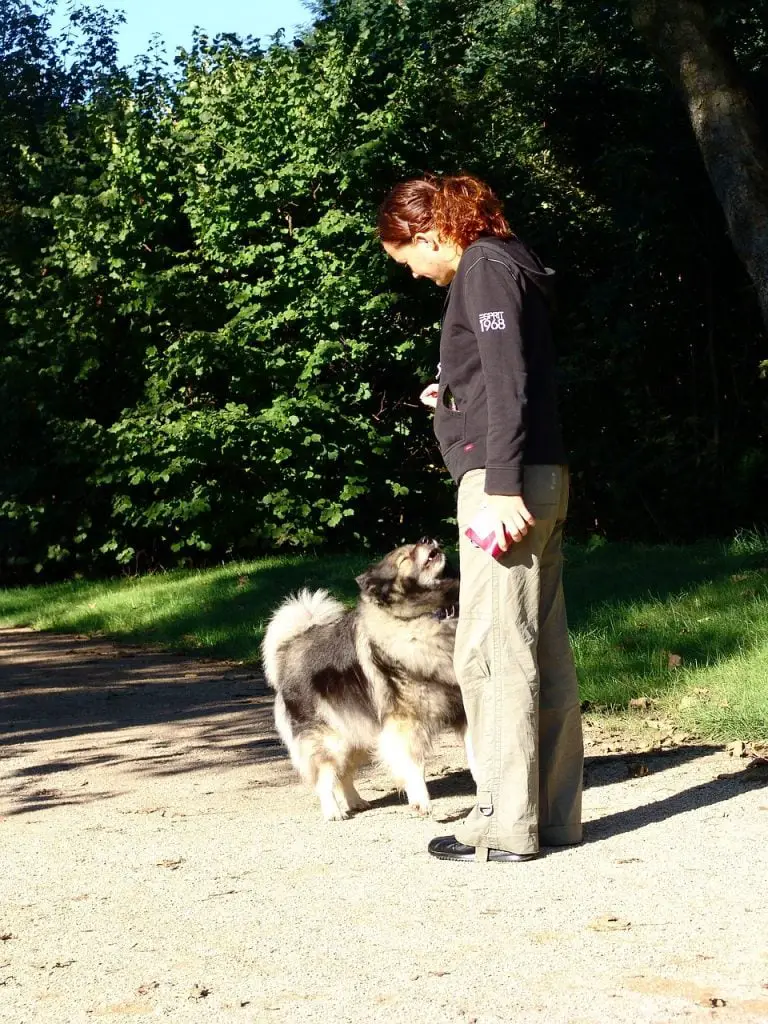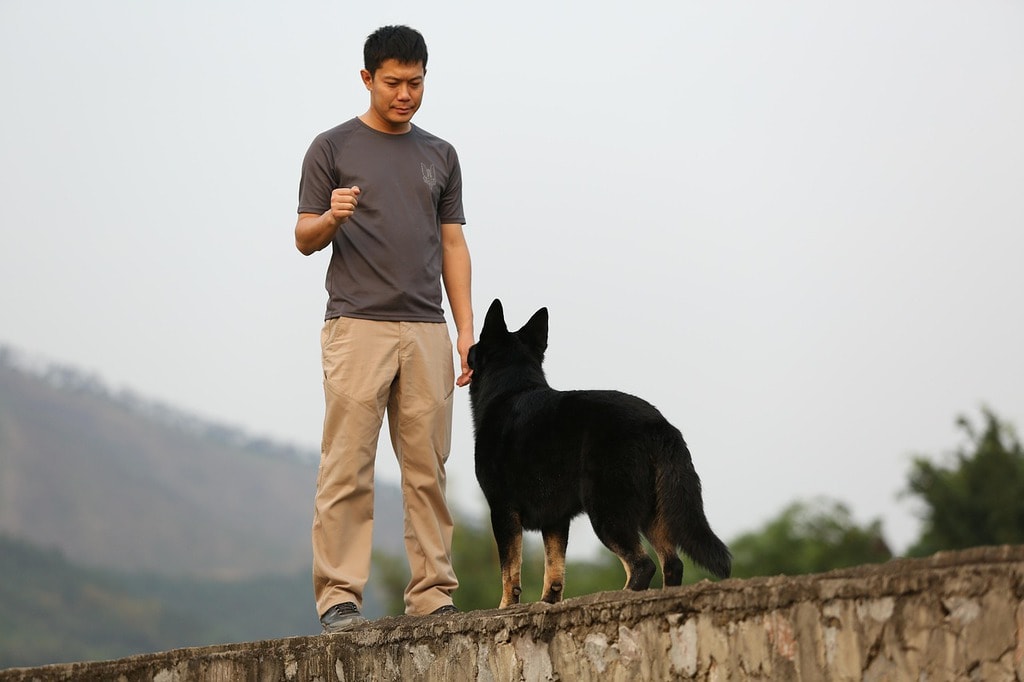It is quite common for dog owners to become attached to their dogs and treat them like family. The love and care they put into their four-legged friend show itself in many ways, including how they worry.
Owners desire to keep their dogs just as safe as any other family member. For this and many other reasons, it is important for their dogs to respond when called.
So how do you teach a dog to come when called? You teach a dog to come when called by establishing regular training routines in a controlled environment, giving the dog the opportunity to practice the desired behavior and experience the rewards of doing so. Consistency is the key to the process, so the owner must establish a training schedule, preferably in the same enclosed area with the same set of rewards for positive behavior.
This article will walk you through the steps of training your dog to come when called.
Why is it Important That a Dog Come When Called?
It is important that a dog comes to you when they are called for two main reasons, obedience and safety. Training a dog to come when called is very important and should be reinforced on a daily basis. As a responsible owner, you will have to teach them certain boundaries and guidelines for their own benefit.
If you don’t there are risks associated with that decision. Dogs who don’t listen to their owner will be more difficult to deal with when they are around other people and other dogs. Further, they will be more challenging to manage when it’s just you and the dog out for a walk.
Training a Dog to Come When Called

While undergoing obedience training, a dog will learn basic commands such as “sit,” “stay,” “walk,” “lay down,” or even “rollover.” Learning the command “come” in conjunction with their name will be among the most fundamental commands they learn.
Training will require efficient communication between owner and pet. Even though it’s one of the most basic commands, it can also be challenging to teach effectively, as is the case with anything new.
Come Up With a Training Schedule
You should be teaching your dog to come when called on a regular basis, but you may also need to establish a regular schedule to really focus on this aspect of training. Decide how many days a week you want to train the dog and how much time you have to spare.
Limit Any Distractions
Your dog might be easily distracted by various sounds or be tempted to run off. For this reason, it’s best to start training in an enclosed space. Limit any distractions while training and begin either indoors or in a fenced-in area.
If training indoors, practice in each room of the house so the dog is in a new setting each time. After the dog makes progress, introduce a few distractions to the training, like putting their favorite toy close by to see if they will still come to you. Once they have mastered this stage, you can take the training sessions outdoors in an open space.
Maintain Eye Contact
Make sure you and the dog maintain eye contact and don’t let them get distracted. Once eye contact is made, and he or she is focused on you, say, “Come here” or simply “Come” in a positive tone.
Keep your commands simple and to the point; you don’t want to confuse your dog with long sentences they will not understand. Simply attach the dog’s name to the command. For example, “Toby, come.” If they do good and come to you, then reward them with a treat (source).
If your dog is particularly excitable and might run away after you give them a treat, practice grabbing their collar as they go for the treat. This will also help your dog to connect a collar grab with positive action.
Keep them Motivated
Keeping your dog motivated when training is a must, using dog toys, squeaky toys, or even tasty treats such as dog bones, kibble, dog bacon, or dog biscuits.
These short term at the moment motivators have the ability to help your dog create long term associations with the desired behavior, making it more likely that they will be willing to come to you over time without an extrinsic incentive. For more information on when to give your dog treats, read this article here.
Rewards and Training
Negative reinforcement used to be the most common method for training dogs, but most animal psychologists favor positive reinforcement to encourage the desired behavior. Negative reinforcement relies more on punishment, while positive reinforcement encourages behavior using rewards (source).
Examples of Positive Reinforcement:
- Chew toys or stuffed animals
- Going out to play fetch with a stick/ball
- Playing tug of war with a dog rope
- Going to the dog park
- Dog bones or dog biscuits
- Positive vocal reinforcement such as “Good job,” “You did so well,” “Good boy/Good girl.”
Examples of Negative Reinforcement:
- An unsettling tone of voice
- Physical punishment, like swatting a dog with a rolled-up newspaper
If you do have to discipline your dog through some form of negative reinforcement that involves physical contact, you should go to where your dog is and never call them towards you. If you do, you will train your dog to associate coming to you with physical punishment (source).
Any physical punishment should be just enough to get their attention and not enough to injure them. Many trainers recommend the “corrective tap,” which is only a light, but abrupt, tap with two fingers on the nose accompanied by an unsettling voice.
Though physical punishment is a form of negative reinforcement, it is also described as “positive punishment,” which can be confusing. It’s positive because it involves an action taken by the trainer. In contrast, “negative punishment” involves taking away a positive benefit like treats.
Take Regular Breaks
Training will require patience from both you and your dog, and some days will go better than others. If there are days when it seems like the training session just isn’t going so well, and one or both of you are getting frustrated, take a little time off.
You can stop for a few minutes, a few hours, or just take the rest of the day off and try again the next day. Pushing the dog any further might actually prove counterproductive. As the dog trainer, you will need to exhibit a calm, but assertive, energy. If you’re frustrated and angry, your dog will pick up on that negative energy.
The Benefits of Training a Dog to Come

Developing Your Personal Bond
When you first begin training a dog, things won’t start off easily. When you do begin training, it will help to have a positive plan of action, use a positive vocal tone, and have an effective reward system. As you build trust with one another, you will create a stronger bond.
As the training progresses, you will each learn how the other response to different situations, and you will become more confident in each other. This added confidence will also decrease the level of stress, making the training sessions much easier.
Managing Your Dog Will Be Easier
Once a bond has been formed, and your dog knows what’s expected of them, managing your dog will be much easier. Having the simple “come” command under their belt will make them much easier to control when you have company over or you’re taking them for a walk in the park.
Training isn’t something that can be rushed or done in a couple of days, it requires patience on both ends. Invest the time and effort and prepare to reap the rewards.
Safety
Having a dog come when you call is critical if they’re off the leash and near a road for example. If they don’t come when you call, and they end up in the road as a car is coming, the result could be devastating.
Having your dog come when they’re called is also beneficial to the safety and comfort of your guests. This is also beneficial for your safety in terms of legal liability since you could be held personally responsible if someone else is injured by your dog.
You can do this to any dogs you have, check this short video here:
Final Thoughts
Dog training isn’t always fun and games; it takes a lot of patience, practice, and plenty of dog treats in your pocket. But, in the end, it’s completely worth the time and effort because of the bond you create, the more manageable your dog will be, and the security it provides to everyone involved.
During your training session, you and your dog will develop an understanding of each other’s patience level, reactions in public situations, and commitment to one another. Don’t rush it, take time with each training session, and you will see amazing results.


I enjoyed the tips! We will be getting a new German Shepherd puppy and I will be using your site for more info.